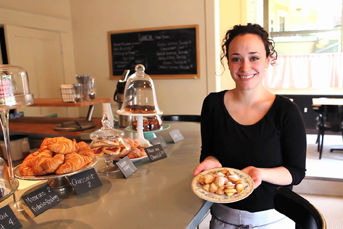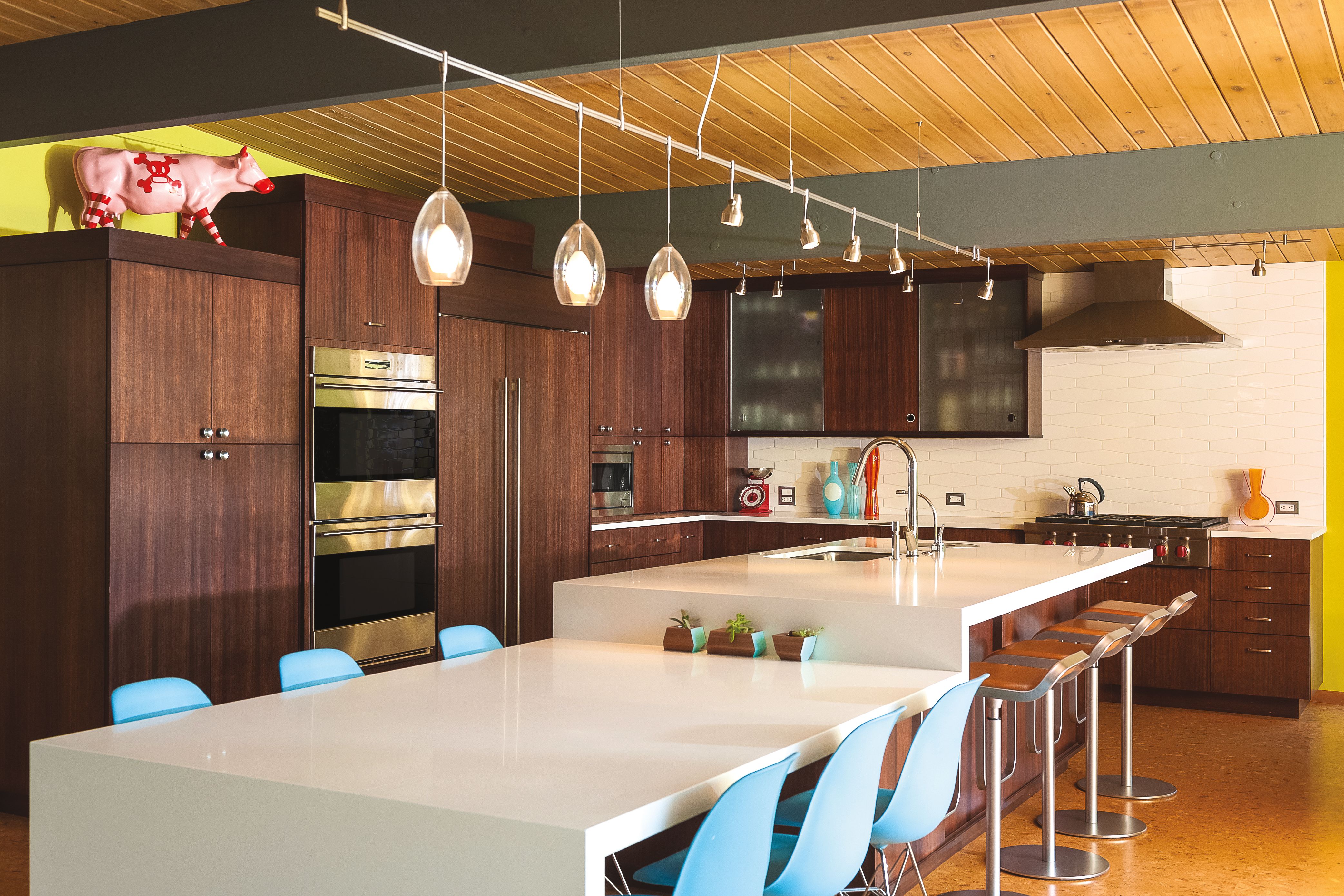
5 Phenomenal Portland Kitchens
The Fairben House
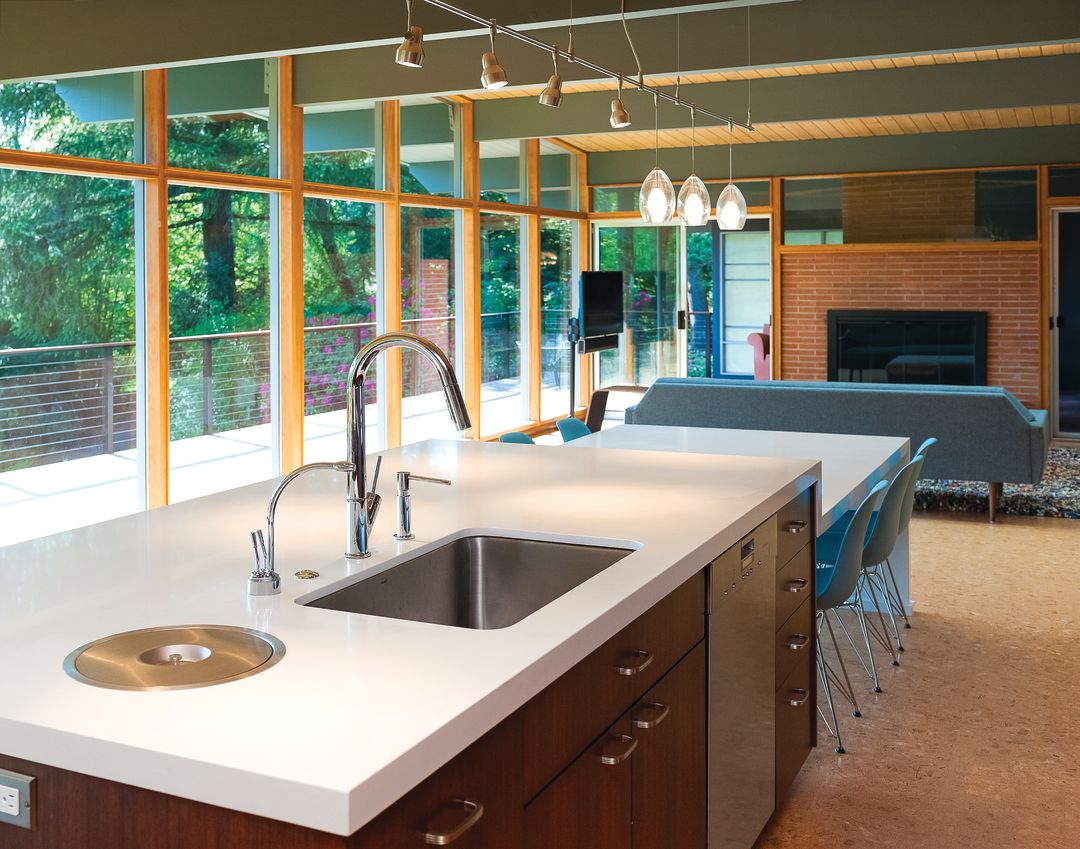
Island Time: A cascading countertop does double duty as a table.
Image: Courtesy Neil Kelly Company
The signature move in the remodel of this circa 1959 midcentury modern home is the way the white quartz kitchen island seems to waterfall over on one side, the surface level dropping to become a table. “I’d spent thousands of hours looking at other kitchens, and I loved that detail,” says Mariah Fairben, who lives in the home with her husband and three girls, ages 7, 5, and 2. “We’d had an island more to bar height before,” she says of a former residence. The low-slung table extension adds a functional—and familial—dimension to the space. “The kids do arts-and-crafts there,” Fairben says. “We eat there. We spend all of our awake time in this area.” Designer Michelle Rolens of Neil Kelly chose darkly stained eucalyptus cabinets to contrast with the quartz. The removal of a wall between the kitchen and living room revealed the clear hemlock walls. The toaster and other appliances are tucked into a cabinet-like countertop “garage” to maintain the sharp modern look. “It’s a way to have everything accessible,” says the designer, “but not have it out cluttering your countertop.”
The Hastie Beahrs House

Kind of Blue: No two tiles are quite alike on the wall and backsplash.
Image: Courtesy Anna M. Campbell
Although the English-style home owned by Claudette Hastie Beahrs and her husband, John, dates to the ’20s, its kitchen had undergone one of those horrible, dated remodels that make you question the sanity of decades gone by. Cabinetry blocked off the breakfast nook. Formica countertops evoked The Brady Bunch, and the range stood smack in the natural walkway—all under a dismal lowered ceiling. After renovation by Howells Architecture & Design, the space is much more functional—and way more blue. The range moved to the counter, with a double oven in the wall. Obstructive cabinetry was relocated. Complementing the white cabinetry is blue ceramic tile, which the design team suggested as a royalist (or royal-ish) nod to the English architecture. “When every kitchen has a white subway tile backsplash,” Michael Howells says, “where’s the personality?” No two tiles are exactly alike, he explains, giving the material an organic, expansive quality, reminiscent of a classic Rothko painting. “It gave us this outcome that I think is a little bit thrilling.”
The Hardison House
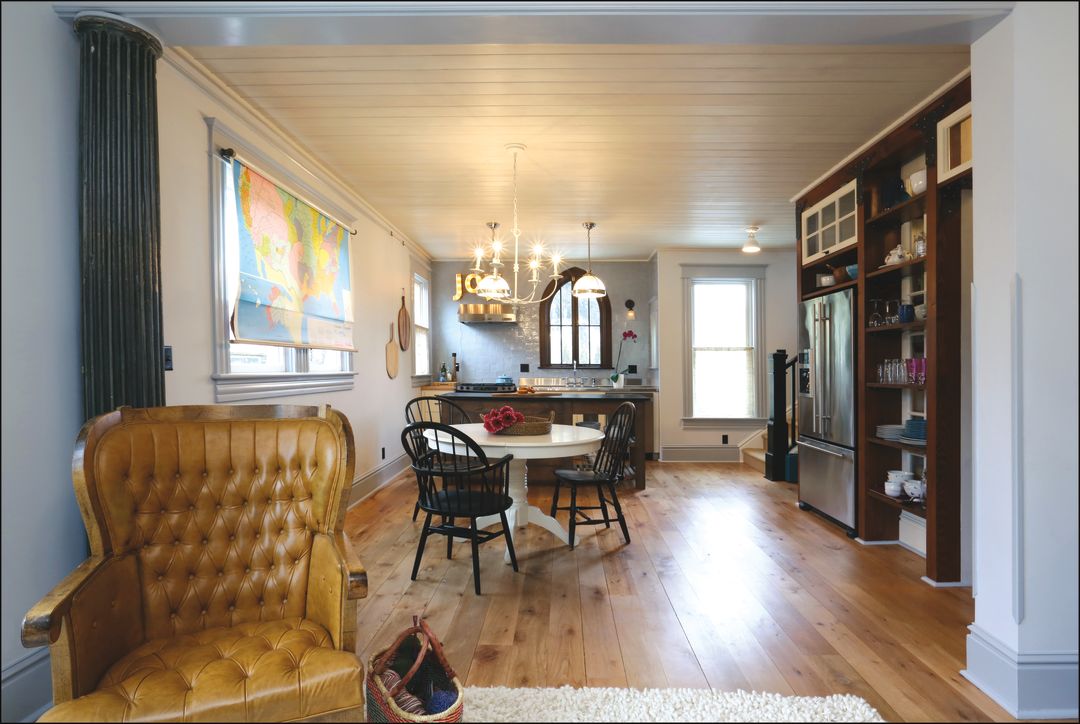
Pretty Things: The remodel preserved a Tudor window.
Image: Courtesy Photo Art Portraits
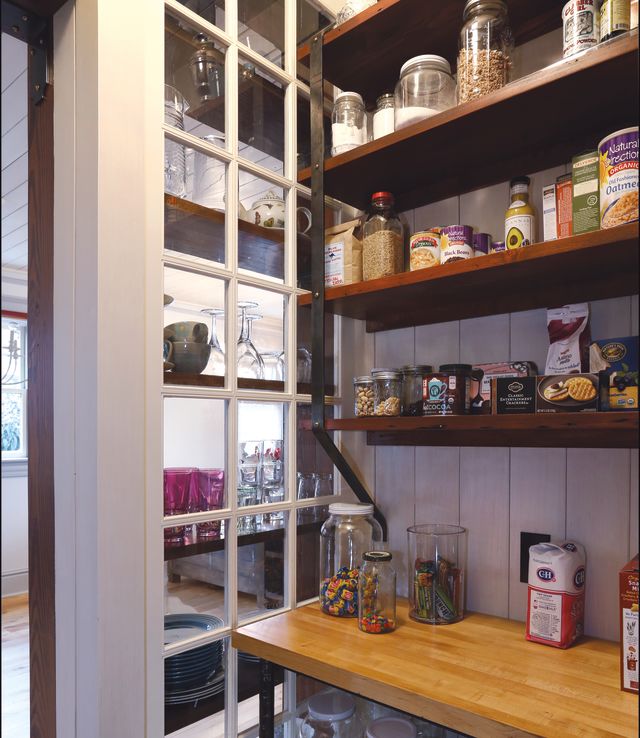
Well Lit: Pantry items stay in view.
Image: Courtesy Photo Art Portraits
Maria and Jim Hardison’s decision to remodel the kitchen in their Sellwood Victorian was all about openness and style over storage and pure function. “They’re not about thinking practically,” owner and designer Anne De Wolf of Arciform says of the family of four. “They like to have something that makes them happy rather than say, ‘I need this much storage.’” In the Hardisons’ kitchen remodel (part of a multiyear, whole-house renovation), there are no cabinets above the sink and main counter area, for example. Instead, the eye lands on an original Tudor-style window, a wall of tile, and one of the illuminated signs Maria makes for a living—this one reading “JOY.” A map of Native American tribal lands shades a nearby window. “I like pretty things,” says Maria. “And we wanted the kitchen to stay open.” Much of the food and cooking tools are stored in an adjacent pantry. And the disjointed layout functions surprisingly well, because the kitchen now stands more open to the rest of the house. “It encourages friends and family to help out, or to help themselves to anything, which is what we want,” Maria adds. “It feels friendly and warm that way.”
The Bouneff Outdoor Kitchen
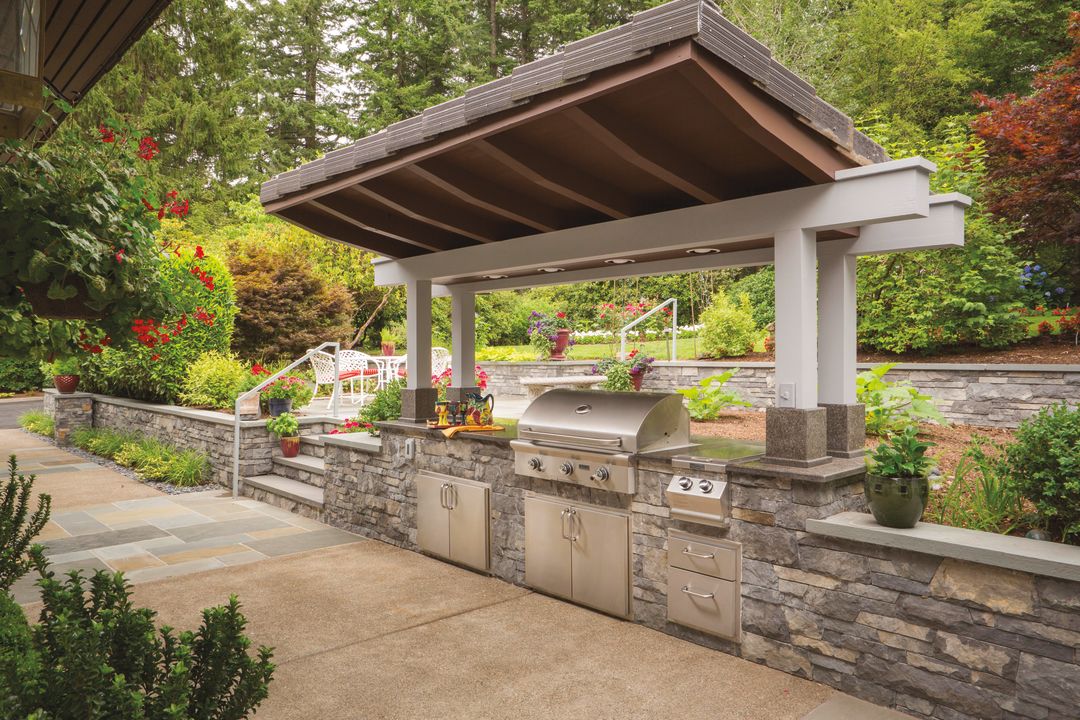
Undercover Love: A concrete-tiled roof shelters the outdoor cooking area.
Image: Courtesy Stephen Cridland
When Barbara and Christ Bouneff agreed to host a family wedding, the affair called for an outdoor dining upgrade. But they didn’t want a kitchen to dominate their yard or the event. The result turned out to be a compact all-weather cooking space with a propane grill and double-burner sheltered by a concrete-tiled roof, with an aesthetic that matches the early 1960s house’s midcentury-modern design by noted local architect Saul Zaik. Designer Bjorn Nordquist worked with the couple to tuck the cooking area around the corner from the backyard. A nearby side door made the spot ideal for choreographing indoor-outdoor cooking projects. But because the side yard was “pretty skinny to begin with,” Nordquist recalls, he proposed to incorporate the kitchen into a rebuilt stone-clad retaining wall. “We have everything we need,” says Christ, “and it’s in harmony with the house.”
The Bilstrom House
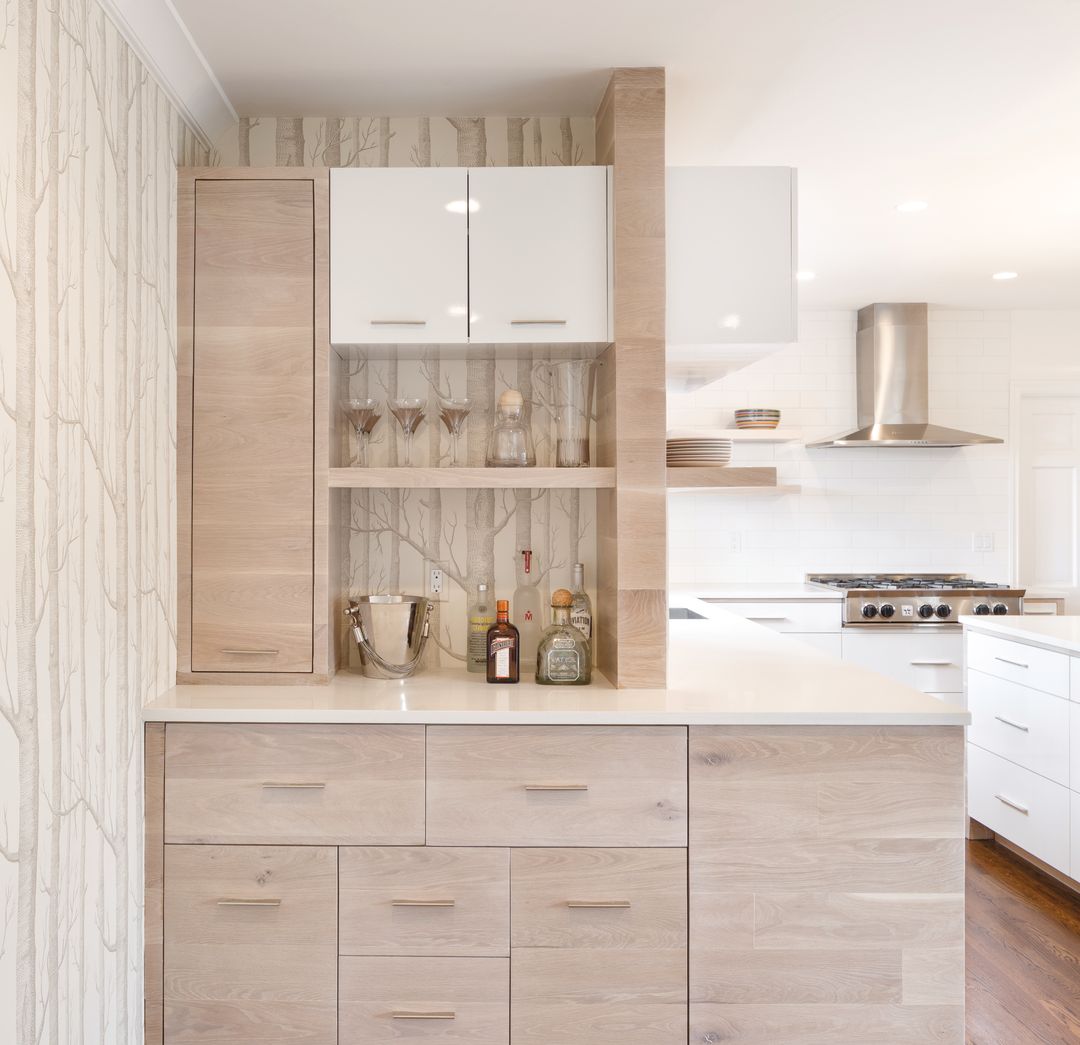
White Album: Dark woods offset the new design’s reigning pale palette.
Image: Courtesy Josh Partee
Shannon and Evan Bilstrom wanted to remove a wall separating the kitchen, entrance, and living room, but they also wanted to enliven their midcentury modern house with a contemporary Northwest feel. Design/build firm Vanillawood began by opening things up. Shannon calls the layout ideal for entertaining and says it’s easier “to keep an eye on” their 4- and 7-year-old sons. Stylistically, the design doubled down on wood tones, with existing oak floors stained dark and a mostly white kitchen (including quartz countertops and subway-tile backsplashes) with a whitewashed-oak flooring material on the sides of the island and bar area. “Bringing wood into the mix and doing a two-tone is a great option,” Vanillawood’s Kricken Yaker says. “Just because you have hardwoods already doesn’t mean you can’t mix in beautiful wood with a different look and feel.”



